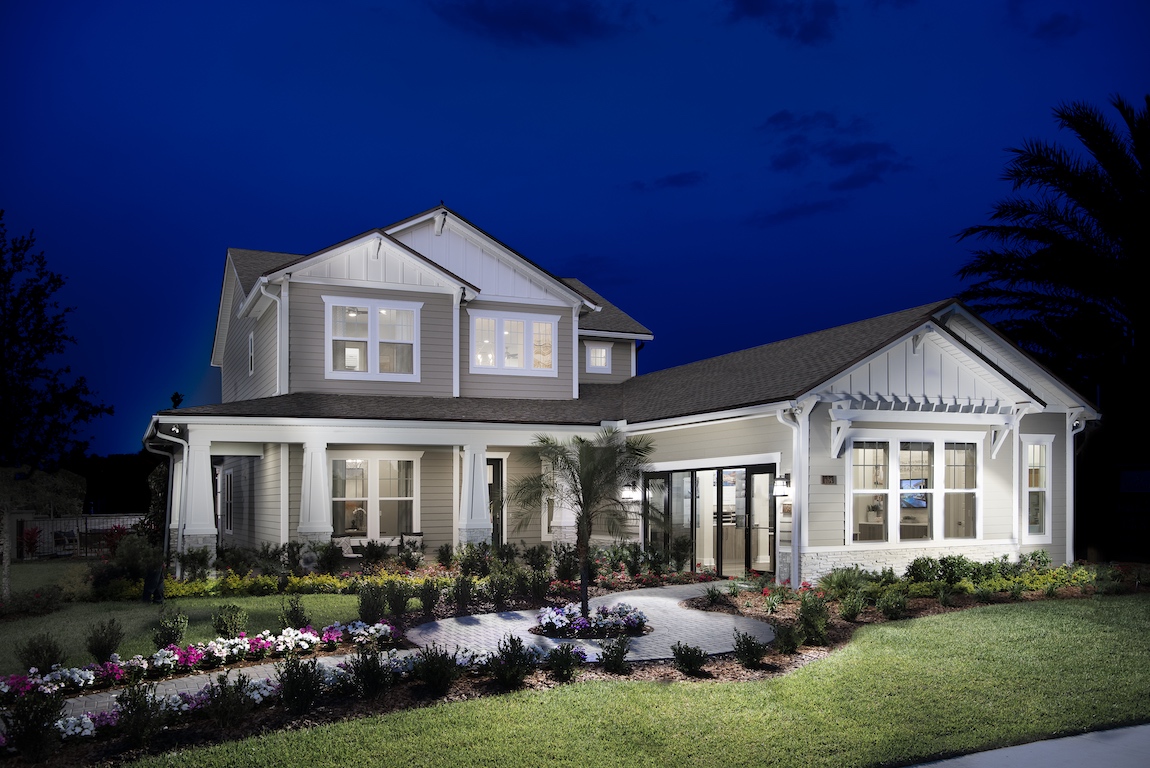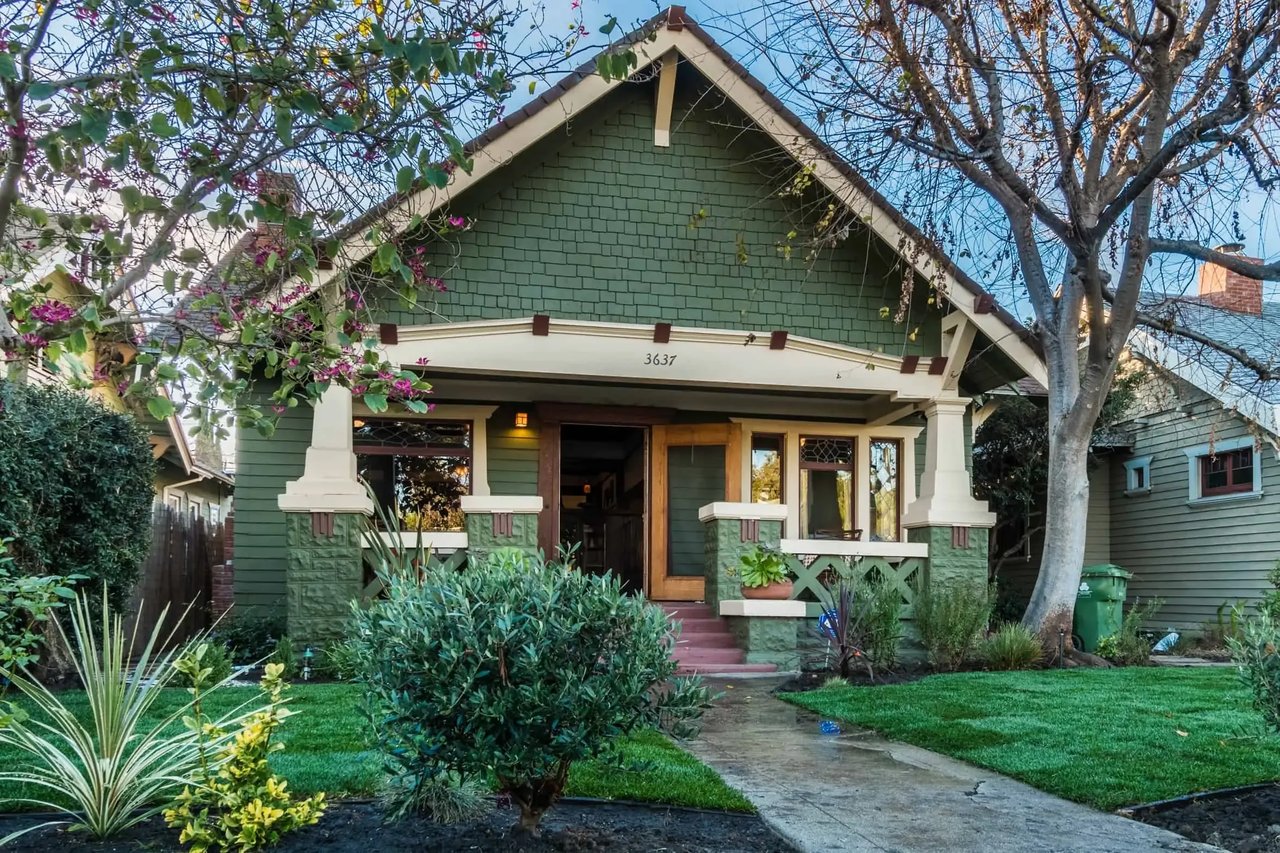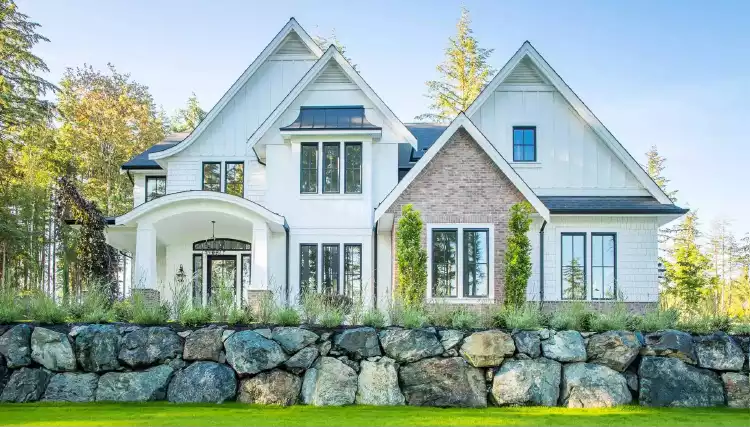Investment Benefits of Owning a craftsman style house
Wiki Article
The Duty of Arts & & Crafts Architects in Elevating Architectural Providers in Residential Style
Arts and Crafts architects significantly affect residential design via their dedication to workmanship and sustainability. They prioritize handcrafted details and natural materials, which boost both looks and area identity. By entailing clients in the layout procedure, these architects create special living spaces that reverberate with personal preferences. This approach increases questions concerning the future trajectory of domestic architecture and its possible effect on area characteristics. craftsman style house. What lies in advance for this classic design ideology?
The Principles of Arts and Crafts Architecture
The essence of Arts and Crafts architecture hinges on its dedication to craftsmanship and simpleness. This architectural motion arised in the late 19th century as a reaction to automation, stressing the value of handmade details and all-natural materials. The concepts of Arts and Crafts architecture prioritize functionality and consistency with the environment. Frameworks typically include low-pitched roofing systems, broad eaves, and exposed rafters, advertising a sense of unity with nature.Artisans played a considerable function in this style, usually integrating ornamental components like stained glass, tiles, and woodwork, which show regional workmanship. The color combination tends to be natural and restrained, allowing structures to blend seamlessly into their environments. On top of that, the layout urges open floor plans and public rooms, promoting a sense of togetherness. On the whole, the concepts of Arts and Crafts architecture celebrate the elegance of simpleness and the significance of human link to both nature and area.

Sustainable Practices in Residential Style
While the need for ecologically liable living continues to grow, lasting techniques in household design have actually obtained considerable grip among architects and property owners alike. Architects are significantly including energy-efficient modern technologies and sustainable products into their layouts, intending to minimize carbon impacts and enhance power preservation. Approaches such as passive solar layout, eco-friendly roofs, and rain harvesting systems are coming to be standard parts of modern-day property architecture.The selection of locally sourced products decreases transportation discharges and supports regional economic climates. Emphasis on all-natural light and ventilation not only improves indoor air top quality but likewise decreases dependence on artificial lights and environment control systems. These sustainable practices show a commitment to preserving the setting while providing house owners with comfortable, efficient space. As understanding of ecological issues grows, the integration of sustainability in domestic design is poised to end up being a specifying characteristic of modern architecture, directed by the principles developed by Arts and Crafts architects.
Personalization and Customization in Home Design
Modification and personalization in home design have actually become key fads in response to the growing wish for distinct living environments that reflect private preferences and way of lives. House owners increasingly seek to tailor rooms that reverberate with their individualities, leading to an extra meaningful link with their home. craftsman style house. This activity urges architects to engage clients in the style learn this here now process, promoting collaboration that ensures the final end result symbolizes the property owner's visionElements such as bespoke formats, custom materials, and customized surfaces enable a varied range of expressions in residential layout. Arts and Crafts architects play an essential function in this advancement, emphasizing craftsmanship and quality. Their emphasis on incorporating imaginative elements with capability warranties that each home is not just aesthetically pleasing but additionally uniquely suited to the residents' requirements. Subsequently, this focus on personalization enhances the general property experience, developing areas that are both individual and enduring.

The Effect of Arts and Crafts Architects on Community Aesthetic Appeals
As neighborhoods develop, the impact of Arts and Crafts architects considerably forms their aesthetic landscape. By highlighting handcrafted information, natural products, and conventional building and construction methods, these architects develop homes that resonate with their surroundings. Their layouts usually incorporate regional vegetations, textures, and colors, cultivating a feeling of harmony in between built atmospheres and nature.The Arts and Crafts activity advertises community identity via architectural continuity. By motivating homeowners to adopt similar layout concepts, neighborhoods establish a cohesive character that boosts visual appeal. This architectural uniformity not only enhances the visual experience but also instills a feeling of pride amongst residents.
Moreover, the concentrate on sustainability and workmanship in Arts and Crafts architecture straightens with modern-day worths, making these designs pertinent in modern setups. Eventually, Arts and Crafts architects add considerably to the overall elegance and social integrity of communities, leaving an enduring effect on their visual tradition.

Future Fads in Arts and Crafts Architecture
With an enhancing focus on sustainability and personalization, future patterns in Arts and Crafts architecture are positioned to blend standard workmanship with modern-day technology - craftsman style house. Architects are likely to prioritize environmentally view friendly products, using recovered timber and natural rock to enhance the sustainability of domestic styles. The assimilation of clever home modern technology will end up being widespread, allowing for individualized living experiences without compromising aesthetic honestyThe revival of artisanal strategies will certainly cultivate a restored admiration for handcrafted elements, such as bespoke cabinetry and custom tile work. Future designs may likewise mirror a focus on community-oriented rooms, motivating communication and link among locals. Outside living areas will gain prominence, seamlessly integrating nature right into the home setting. As Arts and Crafts architecture advances, it will continue to honor its roots while adjusting to modern requirements, producing harmonious spaces that mirror specific values and way of lives.
Frequently Asked Questions
What Motivated the Arts and Crafts Activity in Architecture?
The Arts and Crafts motion in architecture was inspired by a reaction against industrialization, stressing handmade high quality, natural products, and a return to conventional workmanship, intending to produce harmonious, useful areas that celebrated virtuosity and uniqueness.How Do Arts and Crafts Architects Collaborate With Customers?
Arts and crafts architects team up with customers with open dialogue, focusing on individual needs and appearances. They highlight craftsmanship and sustainability, promoting a collaboration that incorporates the client's vision with the architect's knowledge in layout and materials.What Materials Are Commonly Made Use Of in Arts and Crafts Residences?
Usual products in Arts and Crafts homes consist of all-natural timber, stone, and block, emphasizing workmanship and natural visual appeals. These aspects produce a warm, inviting environment, showing the motion's commitment to high quality and simplicity you can find out more in design.How Do Arts and Crafts Designs Enhance Indoor Living Spaces?
Arts and Crafts layouts boost interior living rooms by advertising all-natural light, open floor plans, and handcrafted details. These elements foster a cozy, welcoming environment, motivating a connection between residents and their environments via thoughtful, functional visual appeals.What Are Some Famous Examples of Arts and Crafts Architecture?
Famous instances of Arts and Crafts architecture consist of the Gamble House, Greene and Greene's masterpiece in The golden state, and the Robie Home by Frank Lloyd Wright. These structures showcase handcrafted information and consistency with nature, defining the movement's significance.Report this wiki page